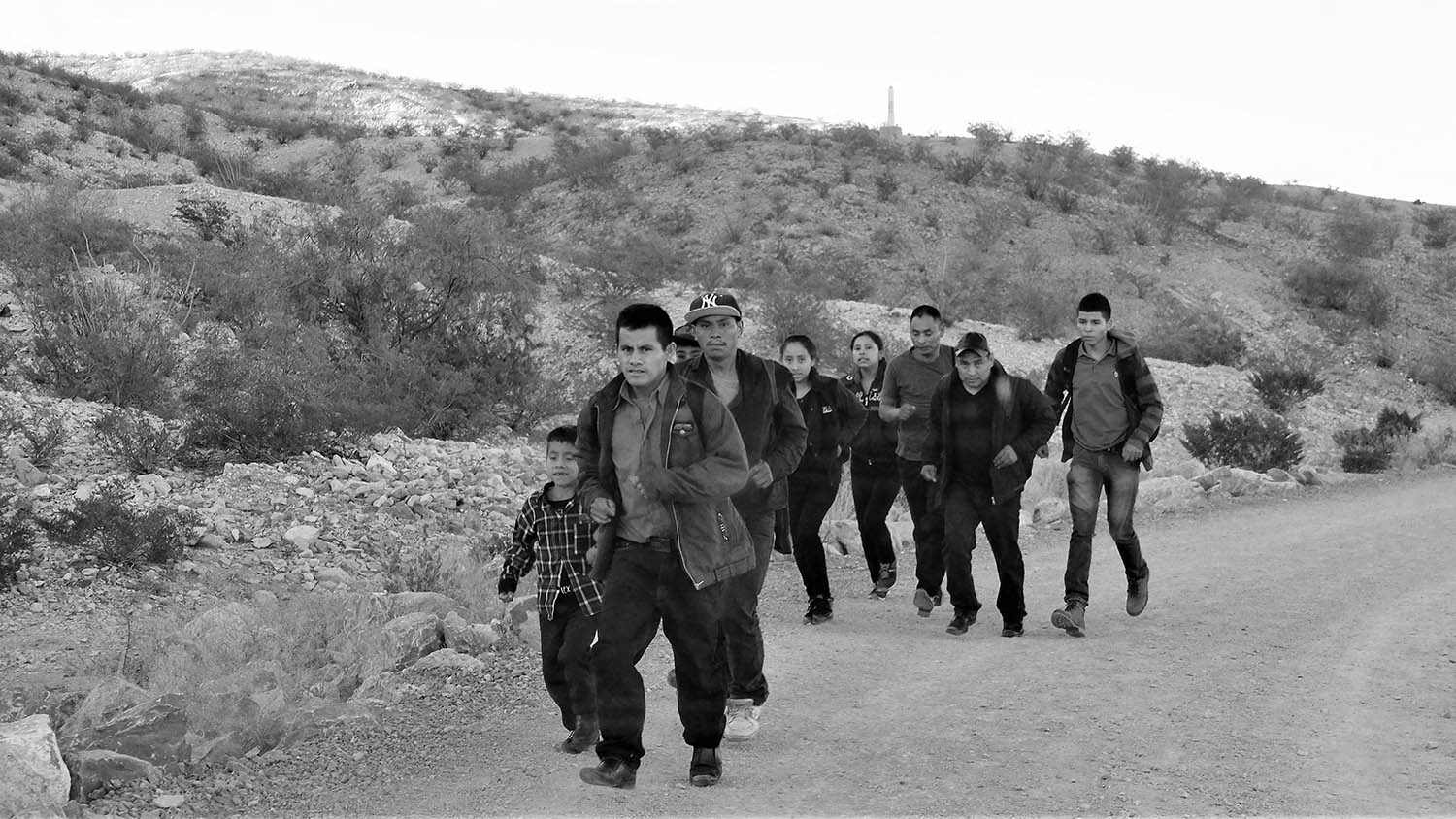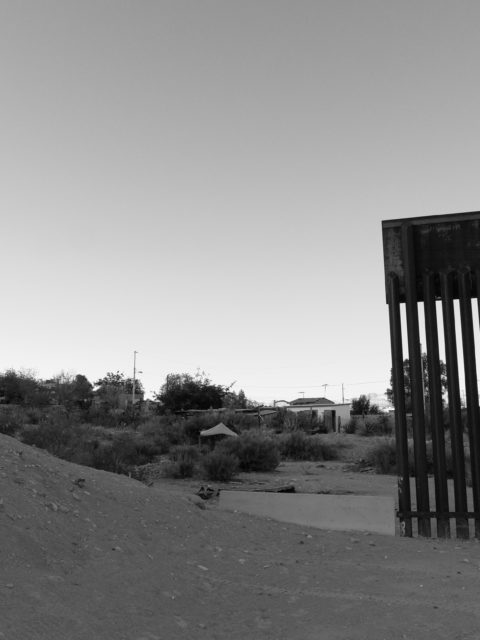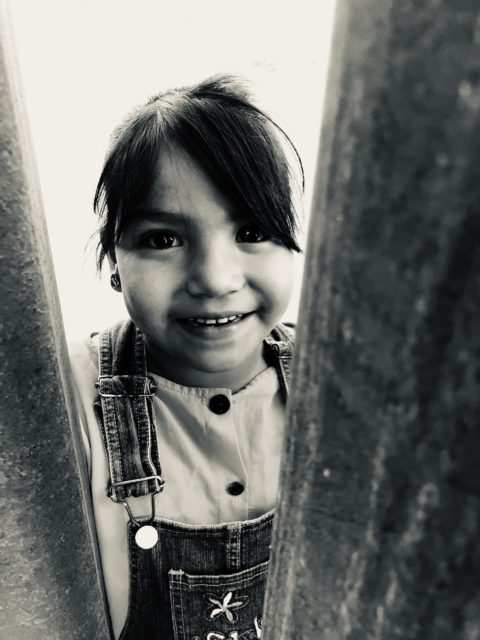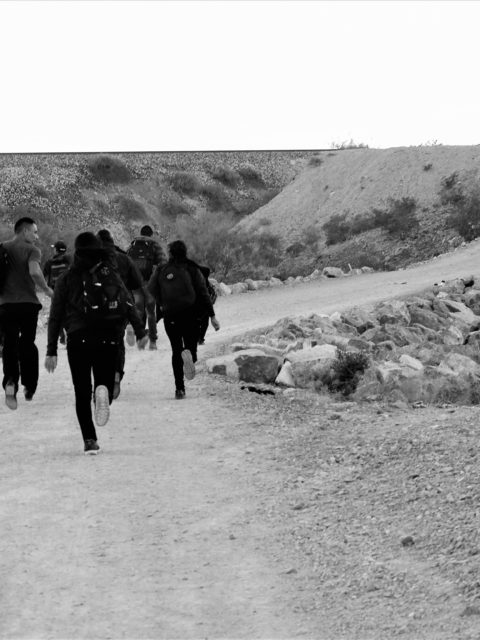Note from Editor:
While this is a personal photo essay and solely reflects the views of the author, Trajectory staff fully support the humane treatment of all migrants and all American citizens. We also fully support the good works Morgan Smith is doing along our southern border.
Morgan’s photos and commentary are below. As always, please feel free to reach out to us with your comments, questions, and concerns. Trajectory remains committed to sharing words and art that enlighten.
Note from author Morgan Smith,
Although the press has focused on the deplorable situation for migrants at the Tijuana, Mexico border crossing, hundreds of migrants have also come to Juárez, Mexico to await what are called “asylum hearings” with US Border Patrol officials. Fortunately for them, there is a Catholic-based facility called La Casa del Migrante where they can stay and be cared for.
I have visited twice and have interviewed a number of these migrants. It is a very painful situation. Many of the families will qualify for asylum status, meaning that they are in grave danger in their home countries, but they will have a long wait. Many others have no chance of entering the US legally. They have been lured into making this long, dangerous trip by “coyotes” who tell them that entering the US and finding good jobs is easy and charge them large fees to bring them north, even knowing that they cannot qualify for asylum status.
Here are photos and some background on those I interviewed.
Earlier this year, I submitted an article about migrants – most of them from Honduras, Guatemala and El Salvador – who were being fed and housed in La Casa del Migrante, a migrant shelter in Juárez, Mexico while awaiting their asylum hearings with US officials. Unlike the deplorable conditions in US facilities like the one in Clint, Texas, La Casa offers a level of care, security and respect that has to be seen to be believed. I’ve visited eight times now, often with my wife, Sherry, and we always take much needed food and clothing.
This has marked a major addition to the work I do on the border. For most of the eight years during which I have been making trips at least once a month, my focus was on the people who live along the border, documenting their struggles in an environment of violence, poverty, and a lack of government support. These are not people who have an interest in migrating to the U.S. Besides, the number of migrants had been going down dramatically; in addition, it seemed that President Trump’s focus on the wall was off target since most of those who are in the US illegally came here legally and just overstayed their visas.
That changed with this dramatic surge of migrants. Not only have the numbers been staggering but the majority are now families rather than young men, making their care much more complicated. In addition, the level of political hostility between Republicans and Democrats has reached a new level of intensity, making it even more unlikely that rational solutions can be reached.
Nonetheless, my involvement in the migrant issue has led to three thoughts.
The Wall
This is clearly a red flag issue for Democrats, but I would ask my party to consider the following. The photo that leads off my earlier article was taken from the Mexico side of the wall as it stretches towards El Paso, Texas. It looks like it goes on forever. On the Friday before this Easter, however, my wife, Sherry, and I followed a narrow dirt road along the US side of this wall in search of the spot where migrants were coming through. We quickly discovered that the wall simply ends as you near the rugged Monte Cristo Rey. This astonished us. Why build a massive and very expensive wall and then just have it end so that anyone could walk across?
Nearby we found the militia camp. They were, in fact, acting as lookouts for the Customs and Border Patrol (CBP).
A month later I drove to the same spot just as a dozen young migrants came running across.
Initially, I was opposed to more wall construction, but now it seems obvious that we
should have a complete wall in places like the El Paso/Juárez area where several million people are congregated.
I’m in favor of expanding immigration. We currently give some form of resident status to about one million migrants a year and I would expand that. But that has to be our decision. As Americans, we have to be the ones to decide who can enter our country. To quote Thomas Friedman in a recent column, ‘Without a high wall, too many American will lack confidence that we can control our borders, and they therefore will oppose the steady immigration we need.’ If we have to expand some border walls to get better control, we should do so.
Humanity versus Dollars.
When we Americans provide services to the needy, we measure our commitment by dollars. So many dollars for the mentally ill or for school teachers or for meals for kids. On the Mexican border, however, the money isn’t available and government support doesn’t exist. The services that are available are provided by private organizations and/or individuals. What characterizes their success is caring and humanity.
This also applies to the way migrants have been treated in the US. The terrible conditions at Clint, Texas are characterized by a lack of caring, not a lack of money.
In contrast, take a look at Deming, New Mexico (pop. 14,000). In mid-May, the CBP suddenly dumped several hundred migrants in Deming and told town officials that it was their problem. The response from the townspeople as well as volunteers from all over New Mexico has been astounding. Just as on the Mexican border, the humanity of individuals is often more important than mere dollars. That is the bright side of this otherwise heart breaking situation.
The Remain in Mexico program.
When people from other countries come to our border and ask for asylum, they are exercising a right. They are not doing anything illegal. Historically they have had an initial screening with the CBP and then allowed to enter the US and stay with other family members pending their final judicial hearing. The recently announced Remain in Mexico program is a dramatic change and a very dangerous one that will require those applicants to return to Mexico to await this judicial hearing. Already well over 10,000 migrants have been returned just to the Juárez area. What does this mean?
In the first six months of 2019, there were 775 murders in Juárez. Compare this to 250 in Chicago and 135 in New York, two cities that are dramatically larger than Juárez, which has a population of about 1.5 million. Is it humane to force these migrants – most of them from other countries with few resources and no contacts in Juárez itself – back into such a dangerous environment? Shelters like La Casa del Migrante can’t come close to handling them all so they will be dispersed and essentially flow out of sight. Unlike the Clint, Texas situation, there will be no way that the press or concerned members of Congress can advocate for them.
Tomorrow, I’m heading to Juárez again, the car already packed with food and clothing. My wife, Sherry is going to pass this time; the extreme heat gets to her as well as my marathon pace. Once you start something like this, however, you can’t just quit. That’s what I have learned from the people I have come to know on the border. At some point you just become a part of them and you have to keep going.
Morgan Smith is a former member of the Colorado House of Representatives and Colorado Commissioner of Agriculture.





